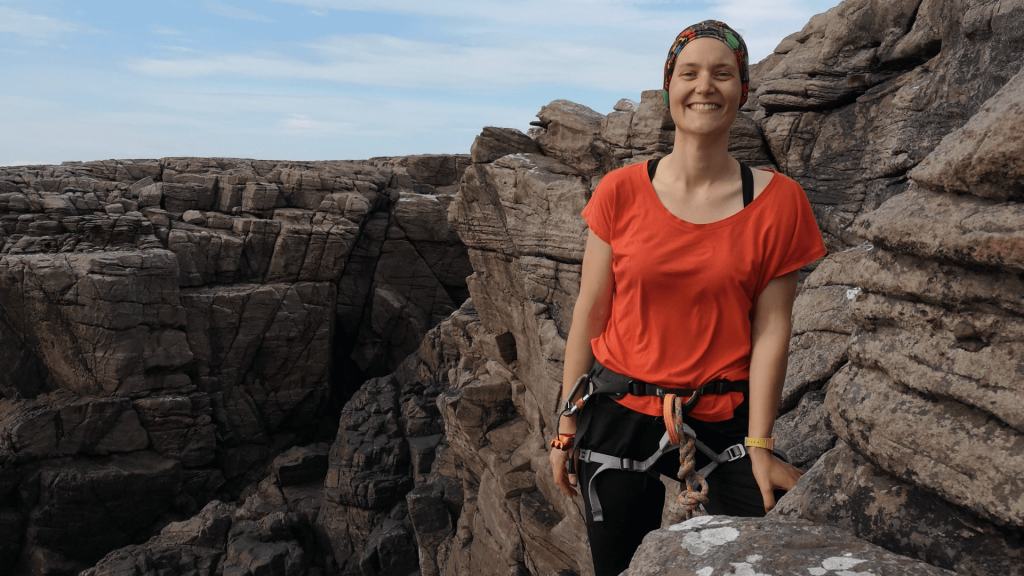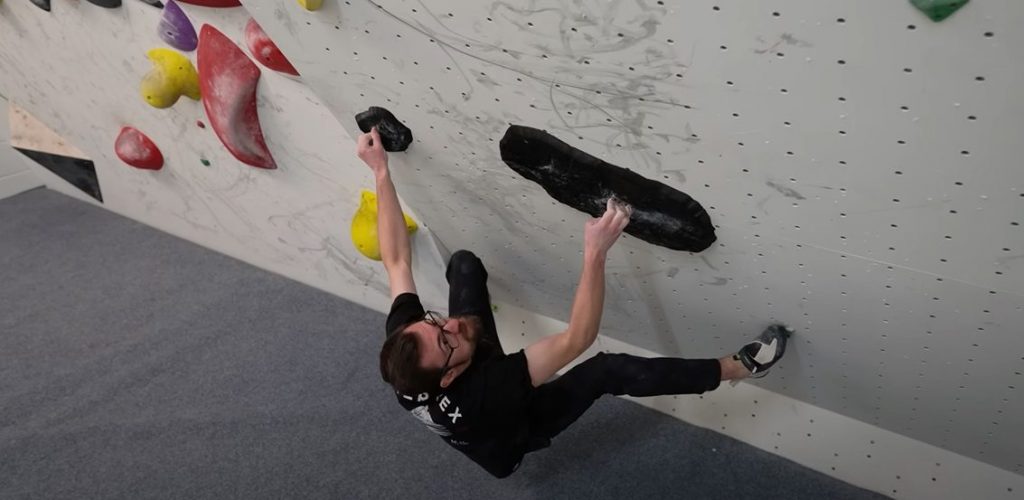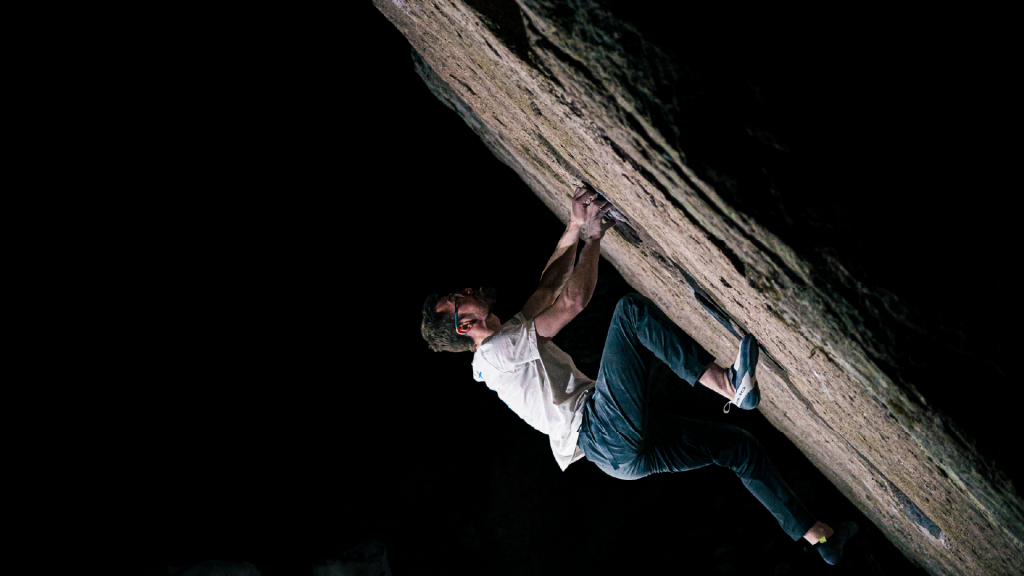Does Flashing a Replica Count as the Send?
The Curious Case of Replica Ethics.
Does it still count as a flash if you’ve trained on a replica? Is replica training cheating?
Answers to these questions may be found by consulting pro climbers, by sourcing the opinions of the climbing community, or somewhat further afield: by doing some Philosophy. Climbing and Philosophy have many things in common: both enjoy solving complex problems, both do so in a methodical, analytical way, and both don’t shy away from the hard stuff. So to me, an Ethics Professor and hobby climber, it’s no surprise that throwing some philosophical analysis at these questions leads to some interesting results.

Image (Author): Dr Lisa Bastian, Assistant Professor, Department of Philosophy, VU Univeristy Amsterdam.
What is a Flash?
The first step is to get clear on what we’re talking about. What even is a ‘flash’ and how is it different from redpointing, or on-sighting? A brief online search and a quick chat with people at the gym confirm that luckily, most people seem to agree on a core definition. When someone flashes a boulder or route, they successfully climb it first try, but are allowed to rely on previous inspection, information, or beta from others. People may of course disagree on what counts as ‘information’ here, but that such information is allowed (in some form) clearly distinguishes flashing from on-sighting.
So is it Still a Flash when Someone has Trained on a Replica?
According to this working definition, we may be able to give a quick answer: since the replica and the boulder are different things, replica training would not in any way challenge the flash. The climber has done the boulder on their first try, and replica training can plausibly be understood as previous information, inspection, and beta, which is permissible.
But the fact that people have such strong opinions about the issue suggests that the quick answer might not be entirely satisfactory. So let’s take a step back and think about why we think flashes are valuable in the first place, or what makes them more valuable than sending after a few tries. I take it that there are at least two factors here:
- Athletic achievement: a flash is valuable because it signifies an athletic achievement. To understand the athletic achievement here, we should keep two things in mind: a) the difficulty of the climb and b) the climber’s ability. While flashes are obviously impressive when they happen on difficult climbs, difficulty alone is not the whole story: if a beginner climber flashes an intermediate climb, it’s an impressive athletic achievement, even if the difficulty of the climb overall was not too high. This suggests that the achievement of flashing is a function of both difficulty of the climb and climber’s ability. As a rule of thumb, we can say that the higher the climber’s ability, the harder the climb must be for it to count as an impressive athletic achievement: we would not be very impressed if a pro-climber flashes 7a, even though that would be an incredible achievement for many climbers. We can further refine this rule of thumb by taking into account the non-linear progression of climbing grades: plausibly, at the top level, above a certain threshold of difficulty and ability, the distance between the climbers’ ability and the climb’s difficulty can be quite small without challenging the status of the flash as an impressive athletic achievement.
- Ability to plan and execute a climb: flashes are also seen as valuable because they show that the climber was able to adequately plan a climb before having tried it, and then to execute their plan effectively. This second factor might be less obvious than the first, but think about it: if we didn’t value some sort of planning-and-executing ability, then only on-sights would be seen as valuable. They clearly are, but we also see flashes as achievements. Since the key difference between them is that one involves an exercise of planning-and-executing based on prior information, while the other doesn’t, this ability is part of what’s valuable about a flash.
With a better understanding of what’s valuable about flashes, let’s reconsider the question of replicas. Now we might see two reasons why replica training diminishes the value of flashes:
- Pertaining to athletic achievement: if replica training has the effect that the distance between the climb’s difficulty and the climber’s ability is significantly reduced, then this may lead to a decrease in athletic achievement: you simply trained so well that there is almost no question anymore whether you’ll do it. This creates an interesting dilemma: either replica training is effective, but then it decreases the distance between difficulty and ability and therefore takes away from the athletic achievement. Or it doesn’t take away from the athletic achievement, but then it just isn’t very effective training. But a bit of nuance is needed. As already said, the distance between climb and climber is already quite small at the top level. Since we’re already operating within small margins here, a small decrease in distance between climb and climber might have a much smaller negative impact on the athletic achievement of the flash at top level.
- Pertaining to the ability to plan and execute: this aspect seems clearly diminished by replica training. The more we can practice on similar terrain, the easier it becomes to have an adequate plan and execute it.
At this point, we can preliminarily conclude that while replica training might not be going against the ethics of flashing, since it can be seen as falling within the permissible categories of ‘information, inspection, and beta’, it can be seen as taking away from the value of flashing, but less so at top level.
One final thought is worth exploring. It also seems to matter how similar the replica is. Let’s imagine an extremely bad and an extremely good replica. For example, any indoor roof climb could be seen as a (bad) replica of any outdoor roof climb. But we don’t consider indoor roof training as cheating, or as taking away from the value of flashes. At the other end of the spectrum, we can imagine a replica that is a perfect 3D printed model of the outdoor climb. In that case, it seems like the value of flashing is definitely undermined.

Image: Will Bosi on scanned and 3D printed Burden of Dreams holds at the Lattice HQ.
And with distinctions above, we can now make sense of why that’s the case:
Bad replicas don’t affect the distance between level of climb and climber (at least not significantly), and they also don’t make it easier to plan-and-execute. Entirely accurate replicas do affect the distance between level of climb and climber significantly and also make it easier to plan-and-execute.
Conclusion
So with all of this in place, which overall conclusions can we draw?
- Most of the time, replicas are quite far from the perfect 3D print. As such, they probably don’t threaten the athletic achievement and planning-and-execution ability enough to cause a decrease in the value of flashing.
- At top level, the acceptable distance between level of climb and climber is much smaller anyway. So in cases of very difficult climbs and very good climbers, the ability of replicas to diminish this distance might be less of a threat because here, athletic achievements exist even in cases of only small margins.

Image: Will Bosi on the send go of Burden of Dreams (c) @diegoborello_
A big thank you to Dr Lisa Bastian from the VU Univeristy Amsterdam, for reaching out to discuss this highly debated topic with us here at Lattice Training. If you would like to hear more from Lisa, be sure to tune into the Lattice Training Podcast episode: “Is Flashing on a Replica Still a Flash”, where we discuss all of the above and more in a full philosophical discussion on climbing ethics.






